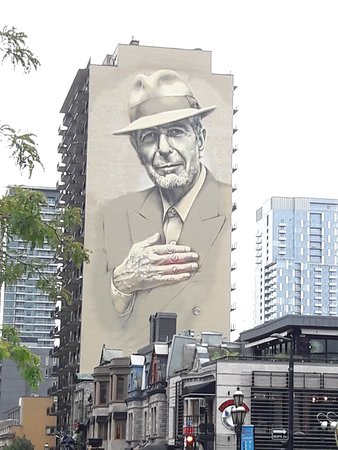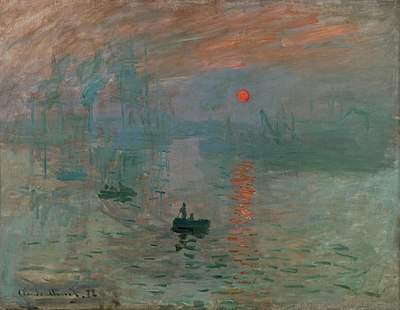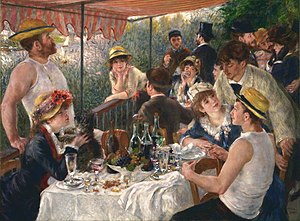3.2 Art as a Challenger of Perspective
3 min read•june 18, 2024
AP French 🇫🇷
52 resourcesSee Units
How does art both challenge and reflect cultural perspectives?

Street art, Morocco Image from scenearabia.com
Art influences society by challenging opinions, translating experiences across space and time, but also promoting shared values. At a time when youth culture controls the world, these public art exhibits invite the observer to consider the importance of these two old men.

Hommage à Leonard Cohen - Street art in Montréal Québec Image from tripadvisor.com
Art encourages us to value our creativity and to search constantly for new ideas. Artists 🎨 often aim to break rules and find unorthodox ways of approaching contemporary issues. In fact, the impressionist movement (19th century France) emerged from artists who did just this:
"Radicaux à leur époque, les premiers impressionnistes ont violé les règles de la peinture académique...Ils ont également peint des scènes réalistes de la vie moderne, et souvent peint à l’extérieur, englobant ce que ses adhérents soutenaient était une manière de voir différente" (hisour.com)

Monet Impressionisme: Soleil levant (Image from wikipedia.org)
What was once outrageous 😲 to both Parisian society and the art world is now appreciated by art aficionados all over the world 🌍 Paintings of everyday people and objects may seem normal or even boring to us today, but in the 1850s, art was for the privileged few. Impressionist artists like Monet, Manet, Renoir, Degas, and Morisot portrayed the lives of the working and growing middle-class and made appreciation of art accessible to all. By defying established standards of the art world, these artists created new standards for beauty and an appreciation of everyday life through art.

Renoir, Déjeuner des canotiers (1881) (Image from wikipedia.org)
The impressionists weren't the only group to challenge ideals of beauty. In fact, every major art movement questions the aesthetic of the preceding movements. This is true of all forms of art. One could say that the role of art is, precisely, to both reflect and challenge cultural norms.
Strive for Five Vocabulary
| mot / expression | explication en anglais |
| les canons de beauté / les critères de beauté | standards of beauty |
| les beaux-arts / les arts visuels / les arts plastiques | fine arts / visual arts / (painting/sculpture) |
| une perspective / un point de vue | a perspective / point of vue |
| défier / contester / provoquer / s’opposer à quelque chose | to defy / contest or dispute / provoke / be opposed to something |
| inclure / soutenir / subventionner | to include / support / fund or subsidize |
| un critique / une critique | a critic / the review of a critic |
| une exposition (d’art) / un spectateur | an (art) exhibit / a spectator |
| émouvant /inspirant / décevant / divertissant | (emotionally) moving / inspiring / disappointing / entertaining |
| créer / bâtir / construire / peindre / dessiner / sculpter / composer / représenter / incarner / incorporer | to create/ build / construct / paint/ draw / sculpt / compose / represent / embody / incorporate |
Browse Study Guides By Unit
👨👩👧Unit 1 – Families in French-Speaking Countries
🗣Unit 2 – Language & Culture in French-Speaking Countries
🎨Unit 3 – Beauty & Art in French-Speaking Countries
🔬Unit 4 – Science & Technology in French-Speaking Countries
🏠Unit 5: Quality of Life in French-Speaking Countries
🌪Unit 6 – Challenges in French-Speaking Countries
📚Study Tools

Fiveable
Resources
© 2025 Fiveable Inc. All rights reserved.